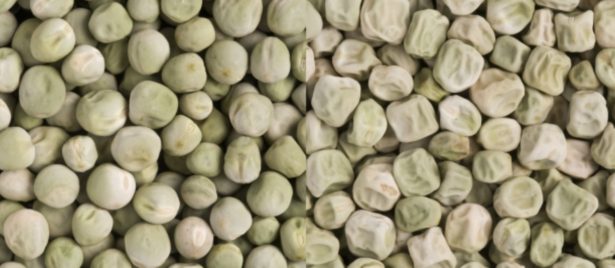Unravelling the riddle of round and wrinkled pea seeds

Gregor Mendel’s observations of seven pairs of characteristics in pea during the 1860s led to the establishment of many of the rules of heredity that we understand today.
However, it was not until 130 years later that the precise gene responsible for Mendel’s most famous pea seed trait – round or wrinkled seeds – was discovered by scientists at the John Innes Centre.
During Mendel’s pea experiments, he noted that some varieties of peas had round seeds, while others had irregular wrinkled seeds.
As a result of crossing these two pea variants, Mendel discovered that the round-seeded and wrinkled-seeded traits were two facets of the same character, suggesting to modern plant scientists that a single gene determines whether seeds are round or wrinkled. White (1917) named the single genetic locus that governed these alternative seed shapes as rugosus (R for round seeds and r for wrinkled seeds).
Plant breeders observed that wrinkled seeds possess higher levels of sucrose than round ones, which contain larger amounts of starch. Consequently, wrinkled peas are preferred for human consumption as fresh or frozen peas, and energy-rich round peas are grown for animal feed.
Finding the wrinkled seed gene
During the 1980s, John Innes Centre researchers began investigating the biochemical differences between round and wrinkled seeds.
They discovered that the high sugar content in developing wrinkled seeds draws in large amounts of water through osmosis, causing the seed to swell. The seeds then lose volume as they mature and dry out to give a wrinkled appearance.
The most significant breakthrough came in 1988, when Professor Alison Smith investigated a report that claimed that wrinkled peas were deficient in an enzyme called ‘starch-branching enzyme (SBE1)’.
Smith found that the amount of starch in pea seeds depends on the presence or absence of SBE1. She observed how wrinkled seeds lack SBE1, which results in reduced starch production and hence higher sugar content and wrinkled seeds.
The final answer to the puzzle occurred when a group of our researchers, led by Molecular Geneticist Professor Cathie Martin, published their innovative investigation into the molecular biology of wrinkled peas.
The group had found that the SBE1 gene is located at the rugosus locus and wrinkled seeds have an extra piece of genetic material inserted into the SBE1 gene. The insertion prevents the normal expression of the gene and thus stops SBE1 being produced.
Mendel requested that all his scientific materials be destroyed upon his death. However, Martin and colleagues are confident that SBE1 was the gene and the mutation studied by Mendel because this was the only mutant allele known at that time to confer wrinkled pea seeds, although other mutations are now known.
John Innes Centre scientists therefore became the first to describe the cloning and characterisation of one of Mendel’s genes.
The Mendel-SBE1 story has become a textbook classic, used to illustrate progress in the science of genetics from Mendel to the modern day.
This research helped improve understanding of starch biosynthesis substantially, and also highlighted the potential for using genetic approaches to improve the nutritional content of pea seeds.
Our researchers have continued to provide new information and materials to improve the quality of peas for human and animal consumption: working on developing a ‘super-sweet’ pea by exploiting induced genetic variation in starch synthesis. They are also currently collaborating on investigations into the potential of ‘resistant starch’ in pea and its significant health benefits.
Further reading
- Bhattacharyya, M.K., Smith, A.M., Ellis, T.N., Hedley, C., Martin, C. (1990). The wrinkled-seed character of pea described by Mendel is caused by a transposon-like insertion in a gene encoding starch-branching enzyme. Cell, 60,115-122. DOI: http://dx.doi.org/10.1016/0092-8674(90)90721-P
- Ellis, T. N., Hofer, J. M., Timmerman-Vaughan, G. M., Coyne, C. J., Hellens, R. P. (2011). Mendel, 150 years on. Trends in plant science, 16, 590-596. DOI: 10.1016/j.tplants.2011.06.006
- Smith, A.M. (1988). Major differences in isoforms of starch-branching enzyme between developing embryos of round and wrinkled-seeded peas (Pisum sativum L.). Planta, 175, 270-279. DOI: 10.1007/BF00392437
- Smýkal, P., Varshney, R.K., Singh, V.K., Coyne, C.J., Domoney, C., Kejnovský, E., Warkentin, T. (2016). From Mendel’s discovery on pea to today’s plant genetics and breeding. Theoretical and Applied Genetics,1-14. DOI: 10.1007/s00122-016-2803-2
- Wang, T.L., Smith, C.M., Cook, S.K., Ambrose, M.J., Hedley, C.L. (1987). An analysis of seed development in Pisum sativum III. The relationship between the r locus, the water content and the osmotic potential of seed tissues in vivo and in vitro. Annals of botany, 59, 73-80
